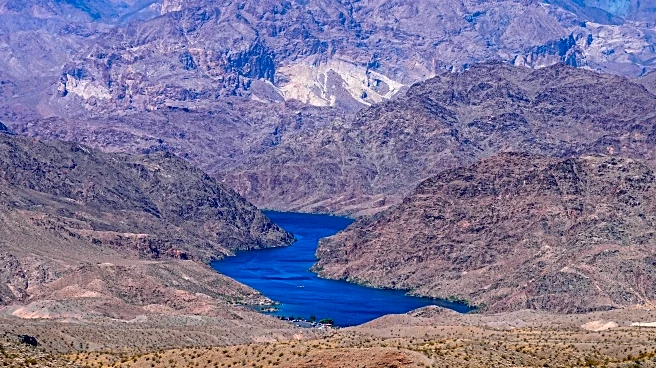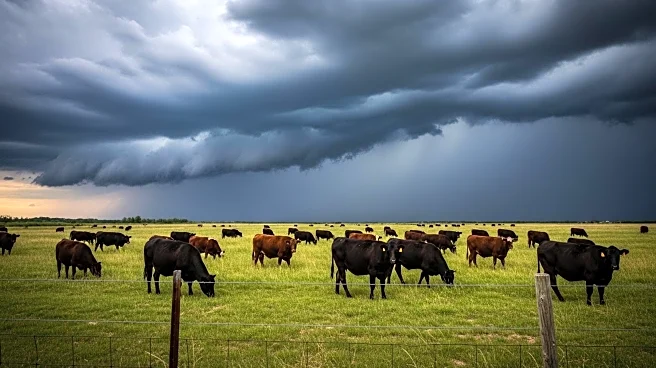What's Happening?
The investor network FAIRR has released a research briefing highlighting the urgent financial and economic challenges posed by water scarcity, particularly in the context of intensive animal agriculture. The report emphasizes that poor water stewardship in this sector exposes the trillion-dollar livestock industry and its investors to substantial risks across the agri-food value chain. FAIRR estimates that water scarcity could cost companies across all sectors between $200 billion and $300 billion, which is significantly higher than the cost of addressing these risks directly. The agriculture sector is responsible for about 70% of global freshwater withdrawals, primarily for water-intensive crops like rice and corn used in livestock feed. The report also notes that water is no longer considered a renewable resource due to current usage patterns, and highlights the varying water requirements of different agricultural products.
Why It's Important?
The implications of water scarcity are profound for the U.S. and global economies, as approximately 60% of global GDP depends on access to water. The livestock industry, a major component of the U.S. agricultural sector, faces potential disruptions in supply chains, increased operating costs, and reduced shareholder returns if water scarcity issues are not addressed. This could lead to broader economic impacts, including curtailed economic growth forecasts. Investors and companies in the agrifood value chain are urged to transition to business models that support water resilience, which involves adapting to, mitigating, and recovering from water-related challenges. The report suggests that improving disclosures around water insecurity risks and setting targets for water resilience are crucial steps for investors.
What's Next?
FAIRR recommends that investors work with companies to improve their disclosures on water insecurity risks, which are currently low, making it difficult to assess individual or portfolio-level risks. Companies are encouraged to define metrics for quantifying water withdrawals and set targets for water resilience. This includes strategies to restore and conserve non-renewable water resources and adapt to changing rainfall patterns. Investors can also support companies in setting water efficiency or reduction targets and linking them to executive pay to increase the ambition of such targets.
Beyond the Headlines
The report underscores the ethical and environmental dimensions of water scarcity, as intensive farming practices contribute to environmental degradation. The transition to water resilience requires coordinated efforts from policymakers, global leaders, businesses, and consumers. This shift could lead to long-term changes in agricultural practices and water management policies, potentially influencing global food security and sustainability efforts.












